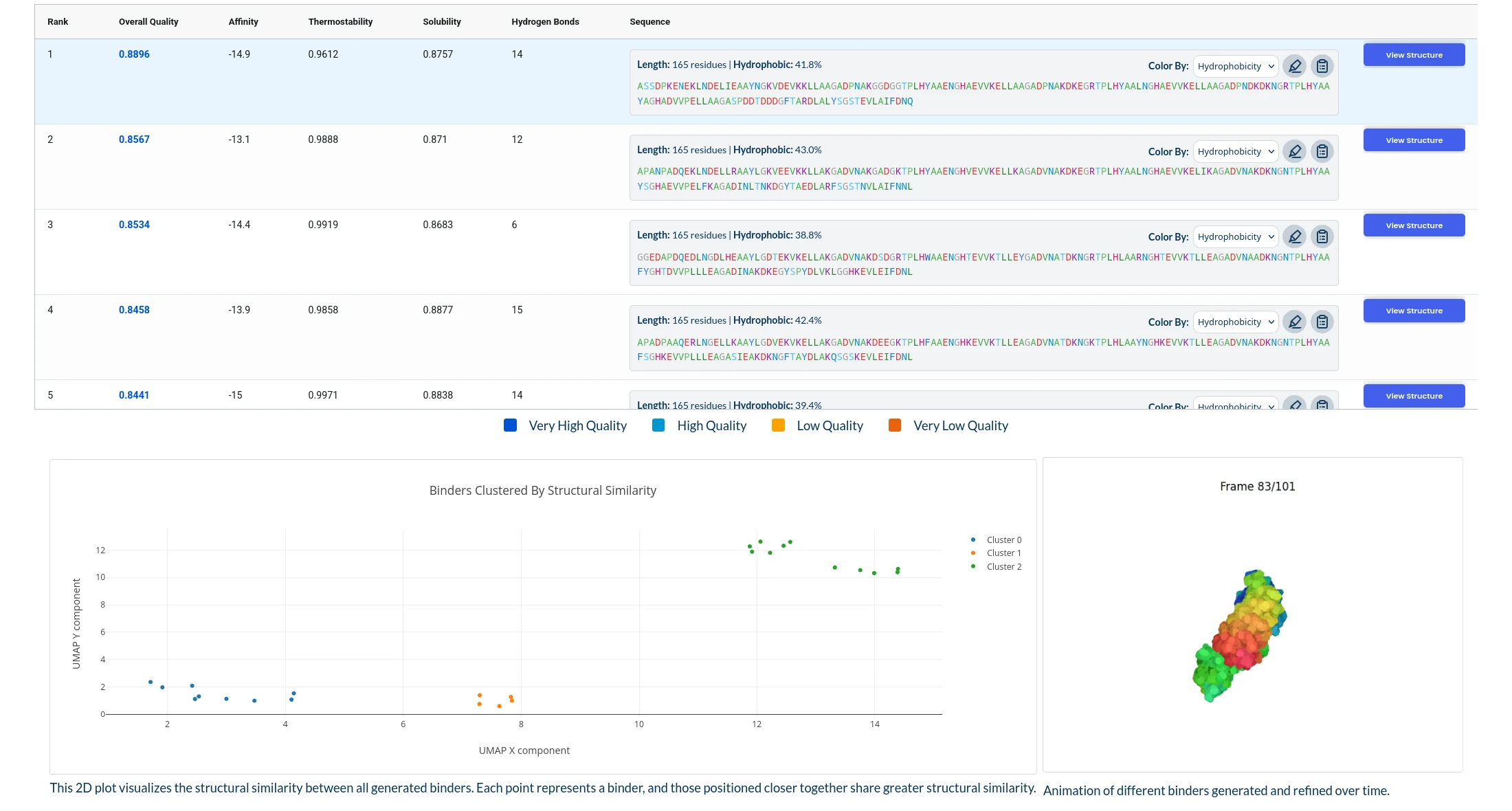Designing DARPins with NeuroBind’s New Affinity Maturation Feature
Written by Keaun Amani | Published 2025-7-28
Written by Keaun Amani | Published 2025-7-28
In this post, we'll walk through how to design high-affinity DARPins using NeuroBind’s cutting-edge affinity maturation feature. If you're new to DARPins, check out our previous post: “DARPins vs. Antibodies: A Comprehensive Guide to Next‑Gen Protein Scaffolds”.
NeuroBind is a powerful in silico protein binder design algorithm capable of both de novo design and affinity maturation. The latest update enables users to input existing binders—whether antibodies, nanobodies, peptides, or DARPins—and automatically optimize them for improved binding, stability, solubility, and reduced immunogenicity.
Optimize and perform your own affinity maturation experiments 🔗 online using NeuroBind.
We’ll use PDB 5OOU, a DARPin scaffold with well-defined ankyrin repeats as our starting point.
Program your design against Programmed Death Ligand 1 (PD‑L1), a critical immune checkpoint protein involved in suppressing anti-tumor immunity.
Under the Custom Template option, upload 5OOU.pdb for design refinement.
When providing both the Target Sequence and Custom Template, it is generally advisable to exclude disordered regions—particularly those commonly found at the N- and C-termini. While not strictly required, retaining these flexible segments can increase computational cost and lead to designs that engage peripheral or non-functional surfaces of the target. In this experiment, we truncate the PD‑L1 sequence to include only the structured, functionally relevant domains, ensuring that NeuroBind focuses its design efforts on the most meaningful regions for high-affinity binding.
NeuroBind can automatically determine the optimal binding interface, saving you time and expertise.
Once your DARPin scaffold and PD‑L1 target are ready:
NeuroBind typically returns 25 refined candidates, ranked by overall quality.
NeuroBind’s result table contains:
| Metric | Definition |
|---|---|
| Rank | Position among candidates, sorted by overall quality |
| Overall Quality | Score (0–1); higher means better predicted performance |
| Sequence | Amino acid sequence of the DARPin binder |
| Affinity | Predicted binding free energy (kcal/mol); more negative values ≈ stronger bind |
| Thermostability | Predicted thermal resilience (0–1); higher = better stability at high temps |
| Solubility | Likelihood of expression in solution (0–1); higher = better solubility |
| Immunogenicity | Predicted risk of immune response (0–1); higher = lower immunogenicity (antibody/scFv modes only) |
| Hydrogen Bonds | Number of predicted H‑bonds at the interface |
NeuroBind also provides a 2D scatter plot to visualize structurual similarity and clustering among designs, aiding in candidate selection.

To identify the top binder for PD‑L1:
Select a candidate that balances these properties for experimental validation or further engineering.

With NeuroBind’s new affinity maturation feature, designing optimized DARPins against therapeutic targets like PD‑L1 is faster and smarter than ever. By taking a robust scaffold like PDB 5OOU and refining it automatically, users benefit from:
👉 Ready to create optimized binders? Try NeuroBind here.
By Keaun Amani
By Danial Gharaie Amirabadi
By Amélie Lagacé-O'Connor
By Amélie Lagacé-O'Connor
By Keaun Amani
By Keaun Amani
Register for free — upgrade anytime.
Interested in getting a license? Contact Sales.
Sign up free